

Zitierweise / cite as:
Payer, Alois <1944 - >: Chronik Thailands = กาลานุกรมสยามประเทศไทย. -- Chronik 1887 (Rama V.). -- Fassung vom 2017-01-27. -- URL: http://www.payer.de/thailandchronik/chronik1887.htm
Erstmals publiziert: 2013-09-23
Überarbeitungen: 2017-01-27 [Ergänzungen] ; 2016-12-02 [Ergänzungen] ; 2016-08-26 [Ergänzungen] ; 2016-04-22 [Ergänzungen] ; 2015-10-01 [Ergänzungen] ; 2015-09-16 [Ergänzungen] ; 2015-04-28 [Ergänzungen] ; 2015-03-13 [Ergänzungen] ; 2015-03-04 [Ergänzungen] ; 2015-01-11 [Ergänzungen] ; 2014-12-11 [Ergänzungen] ; 2014-10-20 [Ergänzungen] ; 2014-03-01 [Ergänzungen] ; 2014-01-01 [Ergänzungen] ; 2013-12-21 [Ergänzungen] ; 2013-11-17 [Ergänzungen] ; 2013-11-09 [Ergänzungen] ; 2013-10-04 [Ergänzungen] ; 2013-09-27 [Ergänzungen]
©opyright: Dieser Text steht der Allgemeinheit zur Verfügung. Eine Verwertung in Publikationen, die über übliche Zitate hinausgeht, bedarf der ausdrücklichen Genehmigung des Herausgebers.
Dieser Text ist Teil der Abteilung
Thailand von
Tüpfli's Global Village Library
ช้างตายทั้งตัวเอาใบบัวปิดไม่มิด
|
Gewidmet meiner lieben Frau Margarete Payer die seit unserem ersten Besuch in Thailand 1974 mit mir die Liebe zu den und die Sorge um die Bewohner Thailands teilt. |
|
Bei thailändischen Statistiken muss man mit allen Fehlerquellen rechnen, die in folgendem Werk beschrieben sind:
Die Statistikdiagramme geben also meistens eher qualitative als korrekte quantitative Beziehungen wieder.
|
1887
Suriya Changwang (สุริยะ จางวาง) ist Fürst von Lampang (ลำปาง)
1887 - 1897
Chao Luang Noranan Chaichawalit (เจ้าหลวงนรนันทไชยชวลิต) ist Fürst von Lampang (ลำปาง)
Abb.: Chao Luang Noranan Chaichawalit (เจ้าหลวงนรนันทไชยชวลิต)
[Bildquelle: th.Wikipedia. -- Public domain]
Abb.: Lage von Lampang (ลำปาง)
[Bildquelle: CIA. -- Public domain]
1887
Tod des Gouverneurs von Ubon Ratchathani (อุบลราชธานี). Die Vollmachten seines Nachfolgers werden von Bangkok beschnitten.
"In 1887, as soon as the governor of Ubonratchathani [อุบลราชธานี] died, the government asserted its power and reduced that of the governorship of the province. The title of phu samret ratchakan [ผู้สัมฤทธิ์ราชการ], which gave the holder the power or life and death over people, was withheld from the new governor, who was made an acting governor, phu raksa ratchakan [ผู้รักษาราชการ]. The government, had it been questioned, could have justified its action by referring to the fact that the power or life and death, belonging only to the King, had been transferred to the commissioner, the representative of royal power in the region." [Quelle: Tej Bunnag [เตช บุนนาค] <1943 - >: The provincial administration of Siam from 1892 to 1915 : a study off the creation, the growth, the achievements, and the implications for modern Siam, of the ministry of the interior under prince Damrong Rachanuphap. -- Diss. Oxford : St. Anthonys College, Michaelmas Term 1968. -- 429 S., Schreibmaschinenschrift. -- S. 108f.. -- Faire use]
1887 - 1888
Siam errichtet kleine Garnisonen in Khammouan (ຄໍາມ່ວນ) und Khamkheut (ເມືອງຄຳເກີດ)
Abb.: Lage von Khammouan (ຄໍາມ່ວນ) und Khamkheut (ເມືອງຄຳເກີດ)
[Bildquelle: NordNordWest / Wikimedia. -- Creative Commons Lizenz (Namensnennung, share alike)]
Siam um 1887 - 1890
Die folgenden Abbildungen stammen aus:
Child, Jacob T.: The pearl of Asia. Reminiscences of the court of a supreme monarch : or, Five years in Siam. Chicago : Donohue, Henneberry & co., 1892.
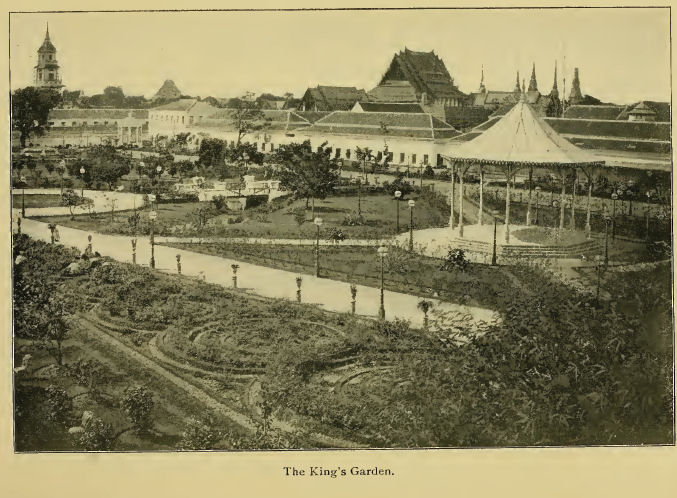
Abb.: Die königlichen Gärten
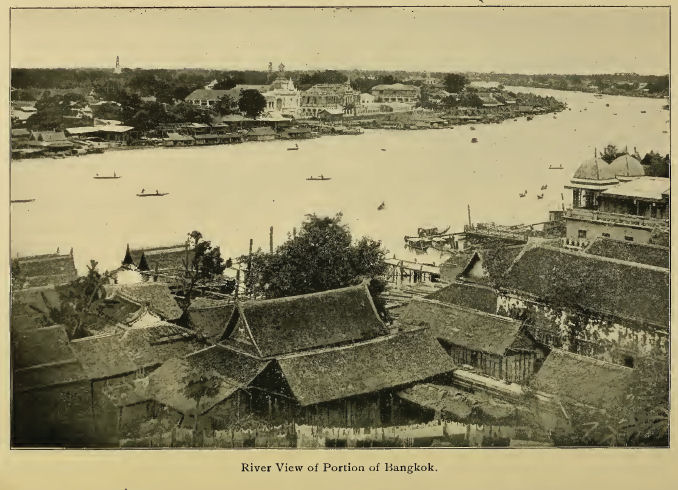
Abb.: Bangkok
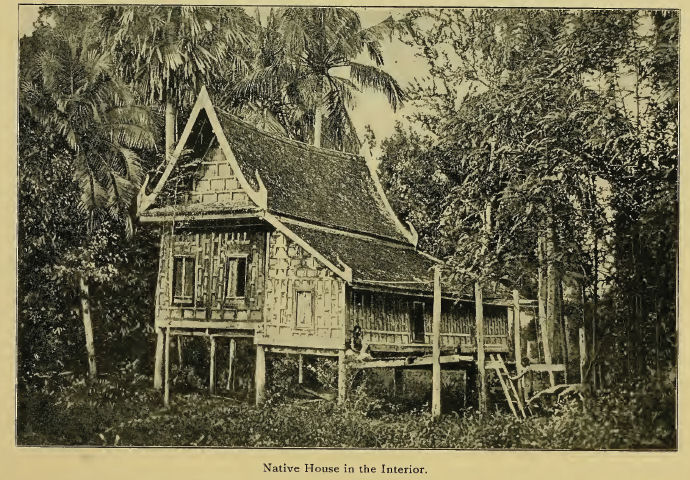
Abb.: Haus in einem Dorf
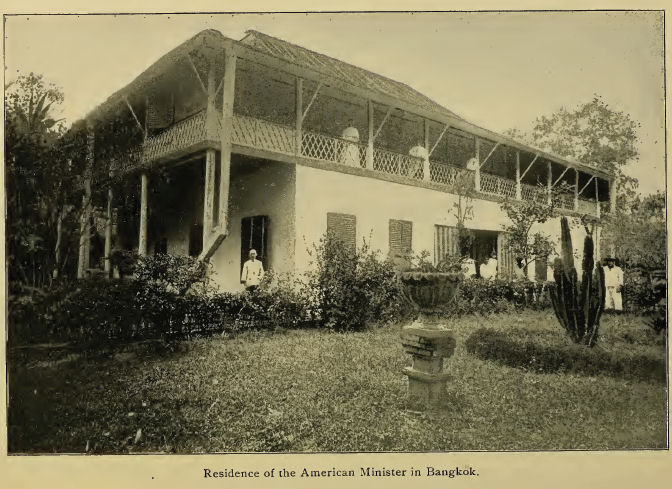
Abb.: Haus des amerikanischen Gesandten, Bangkok
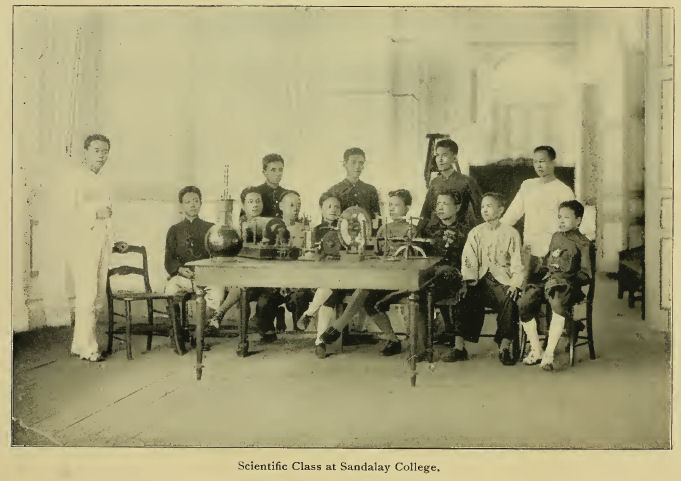
Abb.: Naturwissenschaftlicher Unterricht in einem Elite-College
Abb.: Der Saṅgharāja (พระสังฆราช): Somdet Phramahasamanachao Krommaphraya Pavares Variyalongkorn สมเด็จพระมหาสมณเจ้า กรมพระยาปวเรศวริยาลงกรณ์
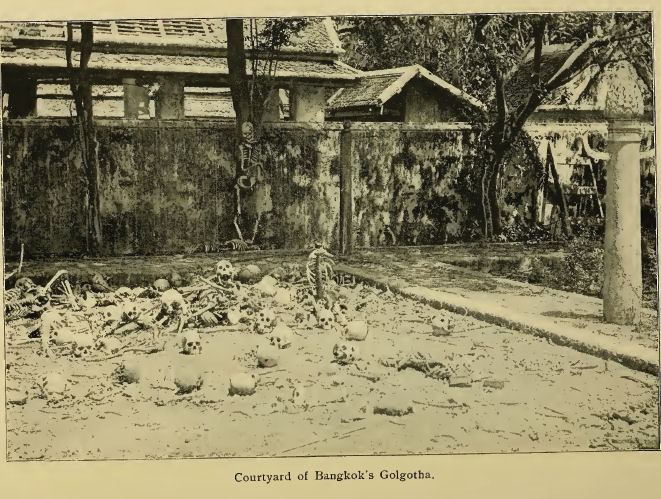
Abb.: Leichenstätte, Wat Saket (วัดสระเกศราชวรมหาวิหาร),
Bangkok: Reste einer Cholera-Epidemie
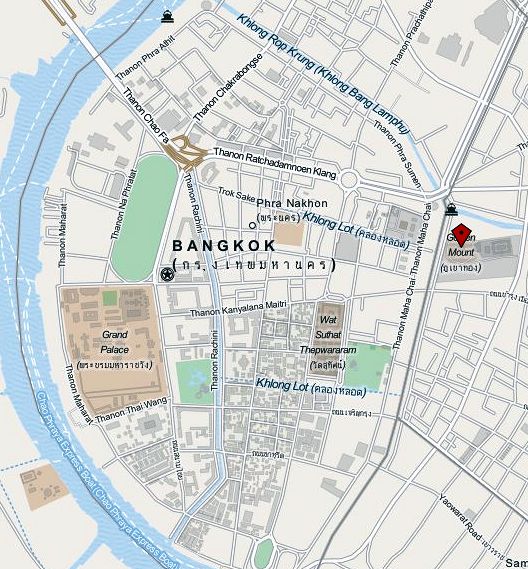
Abb.: Lage des
Wat Saket (วัดสระเกศราชวรมหาวิหาร)
[Bildquelle: OpenStreetMap. --
Creative
Commons Lizenz (Namensnennung, share alike)]
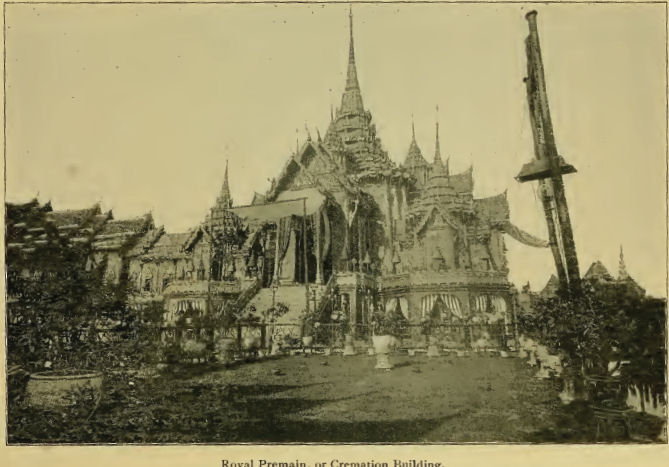
Abb.: Gebäude für die Kremation des Königs
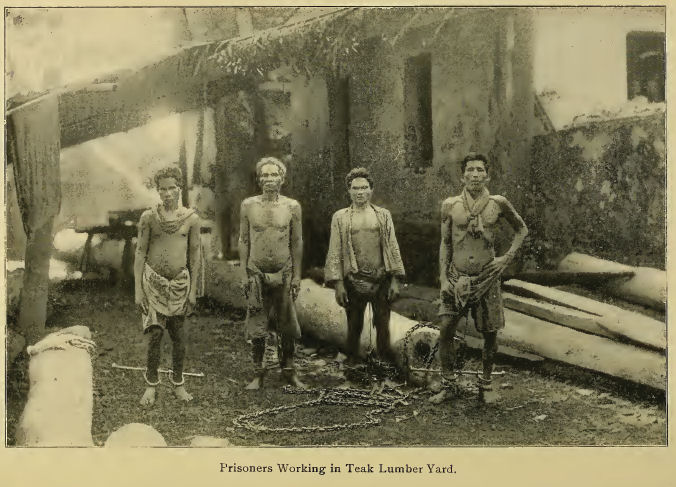
Abb.: Gefangene, in einer Teakholzsägerei arbeitend
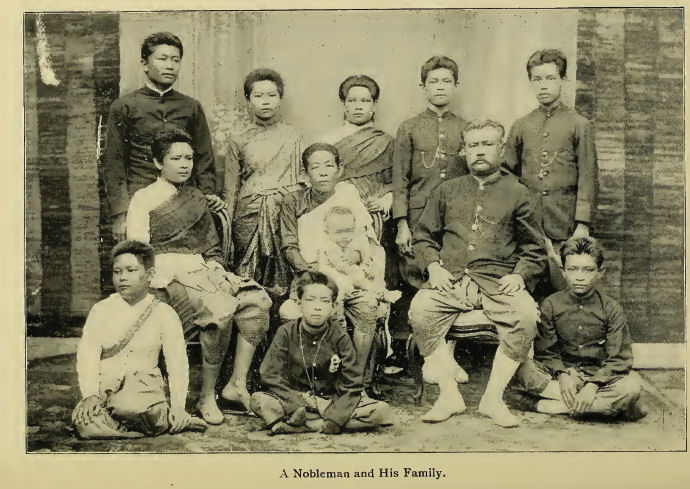
Abb.: Vornehme Familie
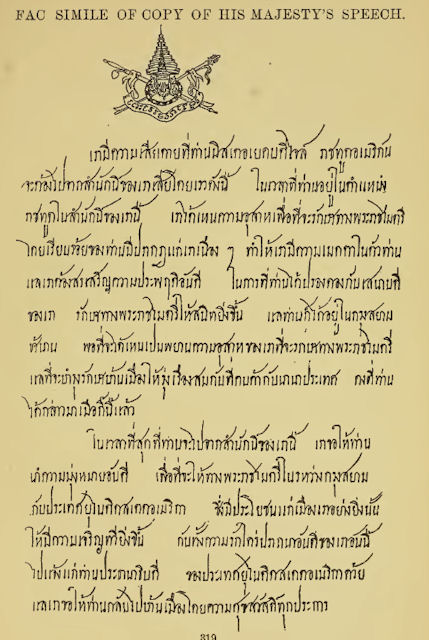
Abb.: Manuskript der Abschiedsansprache des Königs an den amerikanischen
Gesandten, 1891-01-17
1887

Rama V. lehnt die Petition einiger Höflinge ab, die absolute Monarchie in eine konstitutionelle Monarchie umzuwandeln.
1887
Gründung einer Kadettenschule (โรงเรียนนายร้อยทหารบก). Ca. 50 Kadetten im Alter von 14 bis 20 Jahren. Leitung Colonel Walker, bald ersetzt durch Colonel Phra Amon Wisai Soradet (To Bunnag) (พระอมรวิสัยสรเดช - โต บุนนาค, 1851 - 1909), da die Leitung der Kadettenschule einem Militärkommando gleichgesetzt wird. Militärkommandos sollten aus Gründen der Loyalität nicht mit Ausländern besetzt werde. Ausbilder sind Ausländer. 1892 wird die Kadettenschule umbenannt in Saranrom Military Academy (โรงเรียนทหารสราญรมย์).
Unterrichtsgegenstände sind
- Schützenwesen
- Schießen
- Marschieren
- Wehrbauten
- Strategie
- Gymnastik
- Topographie
- Thai
- Arithmetik
- Algebra
- Geometrie
- Trigonometrie
- Geographie
- Zeichnen
- Englisch
1887
Abb.: Ländliche Miliz, 1887
1887
Abb.: Siamesischer Kommissar in Laos, 1887
[Bildquelle: Cupet, Pierre-Paul (1859-1907)]
Abb.: Siamesischer Kommissar in Laos, 1887
[Bildquelle: Cupet, Pierre-Paul (1859-1907)]
1887
Erlass über Fan-tan-Glücksspiel (番攤):
"Proclamation of the Public Revenue Development Chamber Somdech Prachao Nongyater Chaofa Chaturon Rasmi, Krompra Chakrapatpong [สมเด็จพระเจ้าน้องยาเธอ เจ้าฟ้าจาตุรนต์รัศมี กรมพระจักรพรรดิพงศ์ , 1856–1900], first Director-General of the Ministry of Finance has received the following command from the King:
The original games which the Siamese have played for fun and in which betting involving various forms of wealth are, from our own national sources,
- horse racing,
- racing,
- bird fighting,
- cock fighting,
- fish fighting and
- card games.
On the other hand, fan-tan [番攤] is from Chinese sources and has been indulged in by the Chinese immigrants who came, under the protection of the King, to earn their living in Siam and to settle down peacefully in their homes. They have also persuaded the Siamese into indulging in it, thereby causing a loss of money, time and the opportunity to make money from business, and creating an inveterate habit for useless things. Its effects are worse than those of the original Siamese games, and indeed introducing this game to this country amounts to a policy of wasting our resources.
At the present, there are in Bangkok gambling dens of several sizes in streets, alleys, rivers and canals and also minor dens shifting about to look for gamblers. According to the list of officers in the Royal Department of Warehouses, there are, in the Bangkok area, large gambling dens for fan-tan in 126 tambols [ตำบล] and minor ones in 277 tambols. This is by no means a reliable estimate, since the duration of gambling activities in different cases vary from 15 days to 2 or 3 months or the whole year according to the extent to which gamblers can be rounded up from busy communities.
Being aware of this, His Majesty feels that this obnoxious Chinese game of fan-tan has misled the Siamese into useless and intoxicating gambling and should be gradually and peacefully abolished. To forbid it straight away would put the Chinese immigrants, who have earned their living here under the protection of the King, into a difficult and distressing position due to long-acquired habits. It follows from the King’s kind disposition towards his people that he wishes, on the one hand, to prevent the Siamese from ruining themselves in fan-tan gambling and, on the other hand, to avoid causing distress to the Chinese who have come to earn their living here under his protection.
The King has consequently commanded Somdech Prachao Nongyater Chaofa Chaturon Rasmi, Krompra Chakrapatpong, first Director-General of the Ministry of Finance, to give instructions to officials of the Royal Department of Warehouses to allocate gambling dens for fan-tan in Bangkok to Chinese gamblers who are, to a certain extent, accustomed to playing it, the rest being meant for abolition. In other words, of the large 126 dens devoted to fan-tan, those in 67 tambols are allowed to continue, while those in 59 tambols are closed down. On the other hand, the very numerous small dens in 277 tambols are all to be closed down. Those which are allowed to continue shall not move from the original places where gamblers normally assemble and shall operate from 7 a. m. to 11 p. m. Moreover, there shall be police officers on duty at every den so as to prevent Chinese gamblers from violating the right of its proprietor.
Such dens as have been determined for abolition shall be closed down from the first day of Waxing Moon in the fifth month of the year of the Rat, Chula Era 1249 [= 1888]. Anyone found guilty of violating this royal command after it has taken effect will be punished according to the law.
Proclaimed this Tuesday, the 13th day of Waning Moon, in the Year of the Pig, Chula Era 1249, being the 6968th day of the present reign."
[Übersetzt in: Prachoom Chomchai [ประชุม โฉมฉาย] <1931 - >: Chulalongkorn the great : a volume of readings edited and translated from Thai texts. -- Tokyo : Centre for East Asian Cultural Studies, 1965. -- 167 S. ; 19 cm. -- (East Asian cultural studies series ; no. 8.). -- S. 67f.]
Abb.: Fan-tan (番攤), Macao, vor 1907
[Bildquelle: Wikimedia. -- Public domain]
"Fan Tan oder Fan-Tan, Fantan (vereinfachtes Chinesisch: 番摊; traditionelles Chinesisch: 番攤; Pinyin: fāntān, wörtlich: "mehrfache Abteilungen") ist ein sehr einfaches, chinesisches Glücksspiel mit Bohnen, das sich in China vor allem in den Spielbanken von Macau großer Beliebtheit erfreut. [...]
BeschreibungVor Beginn setzen die Spieler ihre Einsätze auf einem quadratischen Tableau, das in vier kleinere Quadrate mit den Zahlen Eins bis Vier unterteilt ist. Charakteristisch für die Fan Tan-Spielhäuser ist die Art, wie dies geschieht: Das Einsatzfeld befindet sich auf einem Tisch, um diesen herum ist ein etwa zwei bis drei Meter hoher Rundbalkon errichtet, von dessen Brüstung herab die Spieler ihre Einsätze in kleinen Körbchen mittels Flaschenzug zu den Croupiers abseilen.
Sind die Einsätze getätigt, so stülpt ein Croupier eine Schüssel mit Bohnen (tatsächlich werden heute anstelle von Bohnen meist porzellanene Marken ähnlich Go-Steinen verwendet) auf den Tisch und schiebt mit der umgekehrten Schale einen Teil davon zur Seite. Jetzt werden die Einsätze getätigt. Dann hebt der Croupier die Schale empor, nimmt zwei Stäbchen zur Hand und zählt die Bohnen, die zuvor unter der Schale gelegen sind, ab, indem er jeweils vier Stück auf einmal zur Seite schiebt.
Bleibt am Ende nur eine Bohne übrig, so gewinnen die Einsätze auf Feld Nummer Eins; bleiben am Ende zwei Bohnen übrig, so gewinnen die Einsätze auf Feld Nummer zwei; usw. Bleiben am Ende jedoch vier Bohnen übrig, so schiebt er diese nicht mehr zur Seite, und es gewinnen die Einsätze auf Feld Nummer Vier.[1]
Die Auszahlungsquoten betragen für die Wetten auf eine volle Nummer 3:1, ein Satz à cheval auf zwei Nummern wird 1:1 ausbezahlt. Der Profit der Spielbank entsteht dadurch, dass die Spieler – von Casino zu Casino unterschiedlich – entweder von ihrem Einsatz oder von ihrem Gewinn eine Taxe bezahlen müssen; der Bankvorteil liegt in etwa bei 5 %."
[Quelle: http://de.wikipedia.org/wiki/Fan_Tan_%28Gl%C3%BCcksspiel%29. -- Zugriff am 2015-04-28]
1887

Rama V. weist die Beamten an, nach alten Inschriften zu suchen. Daraufhin erhält das königliche Museum viele Inschriften.
1887
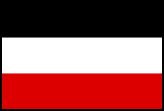
Eröffnung der Gesandtschaft Siams in Berlin (Deutsches Reich).
1887

Abkommen mit Großbritannien: britische Staatsbürger werden der siamesischen Justiz unterstellt im Falle von Herstellung, Verkauf oder Gebrauch von Opium.
1887

Das französische Außenministerium beauftragt Captain Louis Paul Luce (1856 - 1911), in den königlich-vietnamesischen Archiven in Hue (Huế) zu forschen, welche Gebietsansprüche Frankreich als Rechtsnachfolger im Mekong-Gebiet (ແມ່ນ້ຳຂອງ / แม่น้ำโขง / មេគង្គ / 湄公河 / Sông Mê Kông) hat.
Abb.: Lage von Hue (Huế) und des Mekong-Gebiets
[Bildquelle: Scottish Geographical Magazine. -- 1886. -- Public domain]
Abb.: 越南全景 - Karte ganz Vietnams, 1885/1890 (Provinznamen rot umrandet)
[Bildquelle: LoC / Wikimedia. -- Public domain]
1887

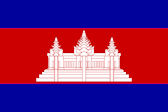
Es erscheint:
Boulangier, Edgar <1850 - 1899>: Un hiver au Cambodge; chasses au tigre, à l'éléphant et au buffle sauvage : souvenirs d'une mission officielle remplie en 1880-1881. -- Tours : Mame , 1887. -- 400 S. : Ill. ; 30 cm
Abb.: Einbandtitel
"There is no political life, because the regime is despotic; public life is rudimentary, for half of the people are slaves and the other half live in fear of the courts; personal security is a myth, because it depends on the venality of a judge or the fantasy of a tyrant; to say it all in one word: the Cambodian, always ready to sacrifice his life or the little possessions he has, vegetates in a kind of half-sleep, made of resignation and the hope for a better life." [a.a.=., S. 65. -- Übersetzung: Muller, Gregor [= Müller, Gregor] <1968 - >: Colonial Cambodia's 'bad Frenchmen' : the rise of French rule and the life of Thomas Caraman, 1840-87. -- London : Routledge, 2006. -- 294 S. : Ill. ; 23 cm. -- (Routledge studies in the modern history of Asia ; 37). -- ISBN 978-0-415-54553-2. -- S. 109]
1887

Aufnahme des Postverkehrs zwischen Bangkok und Saigon.
Abb.: Lage von Bangkok und Saigon
[Bildquelle: Bartholomew, J. G. <1860 - 1920>: A literary & historical atlas of Asia. -- London, o. J.]
1887/1888

Der britische Militär George John Younghusband (1859-1944) ist auf Spionagetour in Siam unterwegs: e soll den besten Zugang nach dem Shan-Staat Kentung (ၵဵင်းတုင်) über siamesisches Territorium finden.
Abb.: Lage von Kentung (ၵဵင်းတုင်)
[Bildquelle: Bartholomew, J. G. <1860 - 1920>: A literary & historical atlas of Asia. -- London, o. J.]
1887

In Bangkok gibt es 36 buddhistische Klöster.
1887

Gründung der buddhistischen Mahachulalongkornrajavidyalaya-Universität (มหาจุฬาลงกรณราชวิทยาลัย, kurz auch MCU).
Abb.: Animiertes ®Logo
[Bildquelle: Tevaprapas / th.Wikipedia. -- GNU FDLicense]
Abb.: Lage der Mahachulalongkornrajavidyalaya-Universität (มหาจุฬาลงกรณราชวิทยาลัย)
[Bildquelle: OpenStreetMap. -- Creative Commons Lizenz (Namensnennung, share alike)]
"Die Mahachulalongkornrajavidyalaya-Universität (Thai มหาจุฬาลงกรณราชวิทยาลัย, kurz auch MCU) ist eine buddhistische Universität im Wat Mahathat in Bangkok. In ganz Thailand gibt es nur zwei buddhistische Universitäten. Geschichte
Die Mahachulalongkornrajavidyalaya-Universität wurde 1887 von König Chulalongkorn (Rama V.) mit dem Ziel gegründet, buddhistischen Mönchen, Novizen und Laien eine höhere Ausbildung zu bieten, wobei der Schwerpunkt auf der Vermittlung buddhistischer Themen liegen sollte. Der erste Unterricht wurde 1889 aufgenommen. Den heutigen Namen erhielt die Universität 1896.
Seit 1997 sind die beiden buddhistischen Universitäten, die Mahachulalongkornrajavidyalaya-Universität und die Mahamakut-Universität, welche sich im Wat Bowonniwet befindet, öffentliche Universitäten.
FachbereicheDie Mahachulalongkornrajavidyalaya-Universität ist in mehrere Fachbereiche und Institute aufgeteilt: Fakultät für buddhistische Studien, Fakultät für Ausbildung, Fakultät für Humanwissenschaften, Fakultät für Sozialwissenschaften, Internationales Programm und das Graduiertenkolleg.
Insgesamt bieten die Fakultäten 26 Bachelor-, 10 Masters-, 2 Promotionsstudiengänge an sowie verschiedene andere akademische Ausbildungen. Zwei der Mastersprogramme, die Buddhistischen Studien und Philosophie, sind international ausgerichtet und werden in Englisch durchgeführt.
EinrichtungenZusätzlich zum Hauptgelände in Bangkok besitzt die Mahachulalongkornrajavidyalaya-Universität weitere Einrichtungen in vielen Provinzen des Landes:
- Nong Khai Campus, Nong Khai (วิทยาเขตหนองคาย)
- Nakhon Si Thammarat Campus, Nakhon Si Thammarat (วิทยาเขตนครศรีธรรมราช)
- Chiang Mai Campus, Chiang Mai (วิทยาเขตเชียงใหม)
- Khon Kaen Campus, Khon Kaen (วิทยาเขตขอนแก่น)
- Nakhon Ratchasima Campus, Nakhon Ratchasima (วิทยาเขตนครราชสีมา)
- Ubon Ratchathani Campus, Ubon Ratchathani (วิทยาเขตอุบลราชธานี)
- Phrae Campus, Phrae (วิทยาเขตแพร่)
- Surin Campus, Surin (วิทยาเขตสุรินทร์)
- Phayao Campus, Phayao (วิทยาเขตพะเยา)
- Balisueksa Putthakhosa Campus Nakhon Pathom, Nakhon Pathom (วิทยาเขตบาฬีศึกษาพุทธโฆส นครปฐม)
- Loei Sangha College, Loei (วิทยาลัยสงฆ์เลย)
- Nakhon Phanom Sangha College, Nakhon Phanom (วิทยาลัยสงฆ์นครพนม)
- Nakhon Sawan Buddhist College, Nakhon Sawan (วิทยาลัยสงฆ์นครสวรรค์)
- Lamphun Sangha College, Lamphun (วิทยาลัยสงฆ์ลำพูน)
- Sangha College Puttha Chinnarat Phitsanulok, Phitsanulok (วิทยาลัยสงฆ์พุทธชินราช พิษณุโลก)
So genannte „Academic Service Center“ (Thai: ห้องเรียน - Lern-Räume) befinden sich in den folgenden Provinzen:
- Wat Sathong, Roi-Et (ห้องเรียน จังหวัดร้อยเอ็ด วัดสระทอง)
- Wat Phra Phuttabat Khao Kradohng, Buriram (ห้องเรียน วัดพระพุทธบาทเขากระโดง จังหวัดบุรีรัมย์)
- Wat Praison Sakdaram, Phetchabun (ห้องเรียน จังหวัดเพชรบูรณ์)
- Wat Pikun Thong, Singburi (ห้องเรียน วัดพิกุลทอง จังหวัดสิงห์บุรี)
- Wat Srakampaengyai, Sisaket (ห้องเรียน วัดสระกำแพงใหญ่ จังหวัดศรีสะเกษ)
- Wat Phrathat Chaehaeng, Nan (ห้องเรียน วัดพระธาตุแช่แห้ง จังหวัดน่าน )
- Wat Boonyavat Viharn, Lampang (ห้องเรียน วัดบุญวาทย์วิหาร จังหวัดลำปาง)
- Pattani (ห้องเรียนจังหวัดปัตตานี)
- Wat Sothon Vararam, Chachoengsao (ห้องเรียน วัดโสธรวราราม จังหวัดฉะเชิงเทรา)
- Wat Patthanaram, Surajdhani (ห้องเรียน วัดพัฒนาราม จังหวัดสุราษฎร์ธานี)
- Wat Chaichumpon Channa Songkram, Kanchanaburi (ห้องเรียน วัดไชยชุมพลชนะสงคราม จังหวัดกาญจนบุรี)
- Wat Phra Kaeo, Chiangrai (ห้องเรียน วัดพระแก้ว จังหวัดเชียงราย)
Zur Universität gehört auch das Mahapanya Vidayalai (มหาปัญญาวิทยาลัย) in Hat Yai, Songkhla"
[Quelle: http://de.wikipedia.org/wiki/Mahachulalongkornrajavidyalaya-Universit%C3%A4t. -- Zugriff am 2011-11-13]
1887

Elf Prinzen (darunter drei Brüder Ramas V.) und Beamte, die sich in Europa zur Ausbildung befinden, schlagen für Thailand ein parlamentarisches System mit einer geschriebenen Verfassung vor. Chulalongkorn lehnt das ab, da die Bürokratie noch zu ineffizient sei und es zu wenig Volksbildung gibt. Er sagte:
"Siamese kings have led the people so that both they and the country might be prosperous and happy... They have more faith in the king than in any members of parliament, because they believe that the king more than anybody else practises justice and loves the people." [Quelle: King Bhumibol Adulyadej : a life's work. Thailand's monarchy in perspective / ed. by Nicholas Grossman ; Dominic Faulder [u. a.]. -- Singapore : Didier Millet, 2011. -- 383 S. : Ill. ; 29 cm. -- ISBN 978-981-4260-56-5. -- S. 36]
1887


Auguste Pavie (1847 - 1925) wird Vizekonsul in Luang Prabang (ພຣະຣາຊອານາຈັກຫລວງພະບາງ)
Abb.: Auguste Pavie (1847 - 1925), 1893
[Bildquelle: Wikipedia. -- Public domain]
Abb.: Auguste Pavie (1847 - 1925) in Luang Prabang
[Bildquelle: Wikipedia. -- Public domain]
Abb.: Treffen von Auguste Pavie (1847 - 1925) mit laotischen Prinzen
[Bildquelle: Wikipedia. -- Public domain]
Abb.: Statue von Auguste Pavie (1847 - 1925) in der französischen Botschaft in Vientiane, 2010
[Bildquelle: Chaoborus / th.Wikipedia. -- GNU FDLicense]
"One of the first moves in the game was to plant M. Pavie, an able official, as vice-consul at Luang Prabang. M. Pavie did not allow the grass to grow under his feet. By means of expeditions conducted in various directions he vastly extended his knowledge of the country, accumulating information which was of immense value to his Government some years later when the relations between the French and the Siamese Governments became strained. " [Quelle: Arnold Wright in: Twentieth century impressions of Siam : its history, people, commerce, industries, and resources / ed. in chief: Arnold Wright. -- London [etc.] : Lloyds, 1908. -- S. 71]
"Auguste Jean-Marie Pavie (Dinan 31 May 1847[1]- Thourie 7 May 1925) was a French colonial civil servant, explorer and diplomat who was instrumental in establishing French control over Laos in the last two decades of the 19th century. After a long career in Cambodia and Cochinchina, Pavie became the first French vice-consul in Luang Prabang in 1885, eventually becoming the first Governor-General and plenipotentiary minister of the newly formed French colony of Laos. Early career
Born in Dinan in Brittany, the son of a cabinet maker, Auguste Pavie did not have the usual makings of a diplomat. He had no training at all either as a military officer or in the grandes écoles. Instead, drawn by the prospect of adventure in distant lands, he joined the army in 1864 at the age of seventeen.[2] In 1869, he was posted to Cochinchina as part of the Marine Infantry. He was called back for military service in France the following year during the Franco-Prussian war, where he reached the rank of sergeant-major. In 1871 he returned to Cochinchina as part of the local administration of the postal and telegraphic service, almost immediately being put in charge of the small telegraphic office in the remote Cambodian port of Kampot, where he served for a decade.[2]
“ In constant contact with the natives, I got used to the idea of living completely amongst them.[3] ” The posting at Kampot gave Pavie the opportunity to gain an in-depth knowledge of the Indochinese, their culture and language.[2][4] One of very few Europeans in this settlement on the Kampot River beneath the Elephant Mountains, he "went native", mastering Cambodian, walking bare-foot and sporting a wide-brimmed hat, as he charted the backlands of Cambodia, recording all that he found of interest. Pavie's approach prompted mixed reactions: his immersion in Cambodian life was criticized by French officials in Cochinchina;[5] however, a French officer remarked at the time that "beneath an appearance of physical weakness, there was a wealth of intelligence put to work with an energy and strength of will without equal."[4] During this period, Pavie supervised the building of a telegraphic line between Phnom Penh and Kampot.[2]
Diplomatic careerIn 1879, Pavie came to the attention of Charles Le Myre de Vilers, governor of Cochinchina and closely involved with the colonial lobbyists in France. Pavie became his protegé and was entrusted to lead a five year expedition to explore the region extending from the Gulf of Siam to the great freshwater lake Tonlé Sap in Cambodia and beyond to the Mekong River. During this period he honed his skills of observation that would stand him in good stead for future missions as explorer and diplomat. These were the so-called "Missions Pavie" conducted over the 16 year period 1879-1895 during which Pavie, accompanied by his assistants, would explore the whole Indochinese Peninsula.[2] At the end of his first mission, Pavie was put in charge of building a telegraphic line between Phnom Penh and Bangkok, a major project.[2]
So impressed were his superiors by his skills in managing this major project, that Pavie was transferred to the diplomatic service as the first vice-consul in Luang Prabang in 1886. Pavie's appointment reflected the desire of the French to continue their colonial expansion in Indochina and their rivalry with Britain, the other main colonial power in the region. The British had already preempted French expansion into Burma with the Third Anglo-Burmese War; the new French diplomatic office in Luang Prabang was a concession by the Siamese amid continuing demands to apportion territories bordering the Mekong River. Pavie was enchanted by his new posting:
“ Conquered and charmed, an impression remains with me: dry fishermen's nets strung up along scaffolding; boats pulled half out of the water onto the strand; rafts crossing noisily over the Nam Khan's rapids into the Mekong; white and gold pagodas roofed with coloured varnished tiles; tall houses built in wood and huts constructed with palm leaves, their roofs covered with thin strips of bamboo; lightly dressed men and women climbing up and down the muddy and steeply rising banks between small gardens and providing an appropriate splash of colour; as a final note, and not too far distant, high mountains, dark green in colour, with tufts of cloud rising from the Nam Khan and dispersing about them. ” Pavie went on to become consul in 1889 and consul general in 1891.[4] In 1887, Luang Prabang was sacked by Chinese and T'ai bandits, hoping to liberate the brothers of their leader Deo Van Tri, held prisoner by the Siamese; Pavie prevented the capture of the ailing local ruler Oun Kham by ferrying him away from the burning city to safety in Bangkok, Siam, thereby winning his gratitude and building his trust in French colonial plans, which were to be one of Pavie's major preoccupations from 1888 onwards.[2] Pavie subsequently established friendly relations with Deo Van Tri, negotiating the release of his brothers; as a result a protectorate treaty was signed with the French in 1889 making Deo Van Tri Lord of Lai Chau, the main town in the feudal Black River region of Tonkin that he controlled.[6] Pavie referred to this kind of diplomacy as la conquête des coeurs [the winning of hearts], which became the title of his autobiography.
In 1892 he became resident minister in Bangkok, and played an important role in the gunboat diplomacy of the Franco-Siamese War in 1893, which resulted in the establishment of the French protectorate over Laos. He was the first commissioner general of the government of the newly formed republic of Laos in 1894, before becoming plenipotentiary minister. At that time, Laos became a part of French Indochina, joining Annam, Tonkin, Cochinchina (which together form modern Vietnam) and the Kingdom of Cambodia; and the Mekong, long referred to as "our river" by French politicians and colonial lobbyists, became wholly controlled by France.[4]
All these posts allowed Pavie access to Cambodia and Laos at every possible level.
Missions PavieDuring his various missions, Pavie managed to survey an area of 676,000 km2 (261,000 sq mi), travelling 30,000 km in the upland areas to the North and East of the Mekong, on foot, by elephant or down the river on rafts, gathering a large amount of scientific information. He was accompanied by a team of up to 40 assistants, with a wide range of expertise, from archaeology to entomology, some like diplomat-doctor Pierre Lefèvre-Fontalis and the immunologist Alexandre Yersin becoming famous in their own right. Many were trained at the École Cambodgienne in Paris, which Pavie helped found in 1885; it would later become the École Coloniale in 1889, and later still the present-day École Nationale de la France d'Outre-Mer. Pavie made a special effort to ensure that the École also trained indigenous assistants, personally accompanying the first Cambodian entrants to France. The original École Coloniale was located at 2 avenue de l'Observatoire, currently the Paris office of the École nationale d'administration.[7][8][9][10][11]
The first mission Pavie, from 1879 to 1885, covered the areas of Cambodia and Southern Siam as far as Bangkok. The second mission, from 1886 to 1889, covered Northeastern Laos and the exploration of the Black river in Tonkin as far as Hanoi. The third mission, from 1889 to 1891, involved the exploration of the Mekong river from Saigon to Luang Prabang. The fourth mission, from 1894 to 1895, involved the areas of Laos bordering with China and Burma on the left bank of the Mekong river, as far as the Red River.[12]
RetirementOn retiring from high office, he returned to France in 1904 and set to work preparing his recollections and observations for publication. Between 1898 and 1921 he produced the multi-volume work La mission Pavie, A la conquête des coeurs and Contes du Cambodge, du Laos et du Siam.[13]
WorksNotes
- Mission Pavie en Indochine, 1879-1895. 7 vols. Paris: Leroux, 1898-1919.
- A la conquête des coeurs: Le Pays des millions d'Eléphants. Paris, Presses Universitaires de France, 1942.
- Contes populaires du Cambodge, du Laos et du Siam. Paris: Leroux, 1903.
References
- Biography of Auguste Pavie
- Ooi 2004
- Guillebaud 2003, p. 109, Auguste Pavie: « Dans le contact constant avec les indigènes, je me familiarisais avec l'idée de vivre complètement parmi eux. »
- Osborne 2006
- Larcher-Goscha 2003, p. 217
- Michaud & Ovesen 2000, p. 59
- Houghton Mifflin 2003
- Deydier 1952
- Guillebaud 2003, p. 104,106
- Mouralis, Bernard; Piriou, Anne; Fonkoua, Romuald (2003), Robert Delavignette, savant et politique: 1897-1976, KARTHALA Editions, p. 59, ISBN 2845863470
- Higham, Charles (1996), The Bronze Age of Southeast Asia, Cambridge University Press, pp. 23–24, ISBN 0521565057
- Aventuriers du Monde, p.100
- Biographical notes on Auguste Pavie, French Diplomatic Service.
- Pavie, Auguste (1995), Au royaume du million d'éléphants: exploration du Laos et du Tonkin, 1887-1895 (présenté par Chantal Edel), Harmattan, ISBN 2738435203
- Biographical notes on Auguste Pavie, French Diplomatic Service
- Paul Le Boulanger: Histoire du Laos français, Essai d'une étude chronologique des principautés laotiennes. Librairie Plon, Paris, 1931
- Grant Evans: A short history of Laos
- Guillebaud, Jean-Claude (2003), "L'Explorateur aux pieds nus" in "Aventuriers du Monde. Les grands explorateurs francais au temps des premiers photographes." (édité par Pierre Fournié), L'iconoclaste, pp. 100–115, ISBN 2-923366-07-4
- Simon, Hélène (1997), Auguste Pavie: explorateur en Indochine, Editions Ouest-France, ISBN 2737315409
- Martin Stuart-Fox: Historical Dictionary of Laos
- Osborne, Milton (2006), The Mekong: Turbulent Past, Uncertain Future, Allen & Unwin, p. 129–134, ISBN 9781741148930, ISBN 1741148936
- Ooi, Keat Gin (2004), Southeast Asia: A Historical Encyclopedia, from Angkor Wat to East Timor, ABC-CLIO, pp. 1038–1039, ISBN 9781576077702, ISBN 1576077705, Entry for Auguste Pavie by Milton Osborne
- Houghton Mifflin (2003), Dictionary of Biography, Houghton Mifflin Reference Books, p. 1183, ISBN 9780618252107, ISBN 061825210X
- Deydier, Henri (1952), Introduction à la connaissance du Laos, Imprimerie Francaise d'Outre-Mer, Saigon
- Larcher-Goscha, Agathe (2003), On the trail of an itinerant explorer: French colonial historiography on Auguste Pavie's work in Laos, Contesting Visions of the Lao Past: Laos Historiography at the Crossroads, Nordic Institute of Asian Studies, pp. 209–238, ISBN 9788791114021, ISBN 8791114020
- Michaud, Jean; Ovesen, Jan (2000), Turbulent Times and Enduring Peoples: Mountain Minorities in the South-East Asian Massi, Routledge, pp. 51–78, ISBN 0700711805, "A Historical Panorama of the Montagnards in Northern Vietnam"."
[Quelle: http://en.wikipedia.org/wiki/Auguste_Pavie. -- Zugriff am 2011-10-15]
1887

Abb.: Gebietsansprüche Siams in Laos 1887
[Bildquelle: Mission Pavie. -- Bd. 5, S. 53]
1887


In Shanghai (上海, China) leben 800 japanische Prostituierte. Die meisten wurden von "Vermittlern" hierher gelockt mit dem Versprechen, dass sie eine Stelle als Dienstmädchen bekommen. Die Väter oder Brüder der Frauen schließen mit dem Vermittler einen Vertrag und müssen eine hohe Vermittlungssumme zahlen, die die Frauen dann durch Prostitution abarbeiten müssen. Auch nach Südostasien werden Japanerinnen auf diese Weise als Prostituierte "gehandelt".
Abb.: Lage von Shanghai (上海)
[Bildquelle: OpenStreetMap. -- Creative Commons Lizenz (Namensnennung, share alike)]
1887

Der englische Erfinder John Kemp Starley (1854 - 1901) stellt das Sicherheitsniederrad Rover III vor. Es ist der Prototyp des modernen Fahrrads.
Abb.: Rover (Niederrad) 1886
[Bildquelle: Lueger Lexikon der gesamten Technik, 1904 - 1920]
um 1887
Moderne Fischfangmethoden mit Schleppnetzen. In Thailand werden diese Methoden in der 2. Hälfte des 20. Jhdts katastrophale Folgen für Umwelt und Kleinfischer haben.
Abb.: Nets for trawling in surface waters and for trawling in deep water and over the bottom. Note the "tangles" with all of the marine life caught up in them.
[Bildquelle: Results of the Scientific Campaigns of the Prince of Monaco. -- Vol. 84. -- Pl. I.]
1887-01-01
Erste Nummer der Wochenzeitung (später Tageszeitung) Bangkok Times.
Erscheinungsweise:
- 1887 - 1890: wöchentlich
- 1891 - 1894: halbwöchentlich
- 1894 - 1895: dreimal in der Woche
- 1896 - 1941: täglich
Abb.: The Bangkok Times
[Bildquelle: Twentieth century impressions of Siam : its history, people, commerce, industries, and resources / ed. in chief: Arnold Wright. -- London [etc.] : Lloyds, 1908. -- S. 294]
"BANGKOK TIMES.
The Bangkok Times, which is the oldest established newspaper in Bangkok, and may be said to have the largest circulation among the European residents, was founded by Mr. T. Lloyd Williamese in January, 1887. It was first published as a small weekly journal containing six pages and thirty columns of printed matter. It met with a considerable share of success from its inauguration, was subsequently converted into a bi-weekly paper, was afterwards published three times a week, and in the early nineties became a daily evening journal. It has been considerably enlarged, and now comprises eight pages, containing forty-eight columns.
Four years ago a limited liability company was formed to take over the paper, which, up to that time, had been conducted as a private enterprise, Mr. C. Thorne, who had been largely interested in the undertaking for many years previously, being appointed managing director of the company. The editor of the paper is Mr. W. H. Mundie, M.A., and he has two European assistants, Mr. R. Adey Moore and Mr. E. B. Gatenby."
[Quelle: Twentieth century impressions of Siam : its history, people, commerce, industries, and resources / ed. in chief: Arnold Wright. -- London [etc.] : Lloyds, 1908. -- S. 295.]
1887-01-18
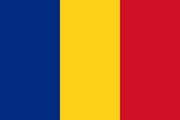
Im Rahmen seiner Dissertation an der Universität Berling gelingt dem Rumänen Lazăr Edeleanu <1861 - 1941> erstmals die Synthese von Amphetamin. Er berichtet darüber in:
Edeleano, Lazăr <1861 - 1941>: Über einige Derivate der Phenylmethacrylsäure und der Phenylisobuttersäure. -- Zugl.: Diss., Univ. Berlin. -- In: Berichte der Deutschen chemischen Gesellschaft zu Berlin. -- 20, Bd. 3 (1887). -- S. 616–622.
Amphetamin wird am Ende des 20. Jahrhunderts als Ya Ba (ยาบ้า) zur wichtigsten Suchtdroge Thailands
Abb.: Lazăr Edeleanu
[Bildquelle: ro.wikipedia. -- Public domain]
"Lazăr Edeleanu (* 1. September 1861 in Bukarest; † 7. April 1941 ebenda) war ein rumänischer Chemiker. Leben und Werk
Edeleanu stammte aus einer jüdischen Familie. Er promovierte von 1883 bis 1887 an der Universität Berlin unter August Wilhelm von Hofmann (1818 - 1892) mit einer Arbeit zur Erstsynthese des Amphetamins[1], die ihm am 18. Januar 1887 gelang. Da die psychotrope Aktivität des Amphetamins erst in den 1920er Jahren entdeckt wurde, schenkte man diesem Fund zunächst keine große Aufmerksamkeit.
Schnell Bedeutung erlangten dagegen weitere Entdeckungen, wie sein Schwefeldioxid-Extraktionsprozess, welcher den Grundstein für die 1910 von Edeleanu gegründete "Allgemeine Gesellschaft für Chemische Industrie" legte. 1930 wurde die Firma aufgrund der steigenden Bekanntheit des Namens "Edeleanu" umbenannt in Edeleanu GmbH. 1937 wurde die Firma von der Deutschen Erdöl-AG aufgekauft, wechselte dann mehrmals den Besitzer und wurde schließlich im Jahre 2002 von der ThyssenKrupp Uhde GmbH unter Ausschluss des Leipziger Firmenteils aufgekauft. Innerhalb der Gesellschaft stellt sie nun den Bereich Raffinerietechnik. Bis in die heutige Zeit ist das Kerngeschäft die Entschwefelung und Raffinierung geblieben. Der Leipziger Firmenteil ging unter Verlust des Namens Edeleanu als EDL Anlagenbau Gesellschaft mbH an die Pörner-Gruppe in Wien."
[Quelle: https://de.wikipedia.org/wiki/Laz%C4%83r_Edeleanu. -- Zugriff am 2016-04-22]
"Amphetamin (alpha-Methylphenethylamin), auch Phenylisopropylamin oder Amfetamin genannt, ist eine vollsynthetisch hergestellte Substanz aus der Stoffgruppe der Amphetamine. Sie findet derzeit in der Pharmazie als Arzneistoff zur Behandlung der Aufmerksamkeitsdefizit-/Hyperaktivitätsstörung (ADHS) sowie Narkolepsie Verwendung. Amphetamin wirkt stark stimulierend bzw. aufputschend, wie alle Amphetamine und die meisten Stimulanzien appetitzügelnd und euphorisierend und ist insbesondere in der Drogenszene unter Bezeichnungen wie Speed oder Pep(p) weit verbreitet. Amphetamin ist die Stammverbindung der Substanzklasse Amphetamine, der etliche weitere psychotrope Substanzen angehören, unter anderem Methamphetamin und das in der Natur vorkommende Ephedrin. Es ist ein Stimulans und indirektes Sympathomimetikum, d. h., es regt die sympathischen Teile des vegetativen Nervensystems an.
Da Amphetamin in der Bundesrepublik Deutschland aufgrund seiner Aufführung in der Anlage III im Betäubungsmittelgesetz ein verkehrsfähiges und verschreibungsfähiges Betäubungsmittel darstellt, wird der Handel und Besitz ohne Erlaubnis strafrechtlich verfolgt.
ÜberblickDie Erstsynthese des Amphetamins gelang 1887 dem rumänischen Chemiker Lazăr Edeleanu (1861 - 1941) an der Humboldt-Universität zu Berlin.[8] 1927 prägte der US-amerikanische Chemiker Gordon Alles den Namen Amphetamin, sich ableitend aus der heute veralteten chemischen Bezeichnung alpha-Methylphenethylamin. Es zählt zu den Weckaminen (Amine mit „aufweckender“ Wirkung).
Ursprünglich als Bronchospasmolytikum und zur Gewichtskontrolle verwendet, wird es heute aufgrund des Suchtpotenzials sowie anderer Nebenwirkungen medizinisch nur noch zur Behandlung der Narkolepsie und der Aufmerksamkeitsdefizit-/
Hyperaktivitätsstörung (ADHS) eingesetzt. Bei der ADHS-Behandlung wird Amphetamin wieder vermehrt eingesetzt, in Deutschland kamen dazu 2011 und 2013 zwei Fertigarzneimittel auf den Markt, in den USA stieg die Zahl der Verschreibungen von Amphetamin in den 1990er Jahren wieder deutlich an. In Deutschland sowie den meisten anderen Ländern werden weiterhin wirkungsähnliche Medikamente bevorzugt: Bei ADHS Methylphenidat, bei der Narkolepsie Modafinil. Als Rauschmittel ist Amphetamin aufgrund seiner Wirkungen wie Unterdrückung von Müdigkeit und der Steigerung des Selbstbewusstseins vor allem in der Partyszene verbreitet. Es wird auch als Dopingmittel gebraucht. Die Menge an beschlagnahmtem Amphetamin in der Europäischen Union nimmt seit 1985 mehr oder weniger ständig zu; während ab 1999 eine gewisse Stagnation erreicht wurde, stieg die Zahl in den skandinavischen Ländern weiter an.[9][10]
Entwicklung und VerbreitungVor 1900 bis 1950
1950 bis heute
- 1887: Lazăr Edeleanu (1861 - 1941) synthetisierte im Zuge seiner Doktorarbeit[8] als Erster[11] das Amphetamin.
- 1893 Der japanische Chemiker Nagayoshi Nagai (長井 長義, 1844 - 1929) synthetisiert das Amphetaminderivat Methamphetamin.[12]
- 1910 entdeckten die englischen Physiologen George Barger (1878 - 1939) und Henry Hallett Dale (1875 -1968) die Ähnlichkeit der chemischen Struktur des Amphetamins mit dem Adrenalin.[13]
- 1927 wurde von Gordon Alles (1901 - 1963) der Begriff Amphetamin geprägt, welcher nach einem günstigeren und einfacher zu synthetisierendem Ersatz für das natürlich vorkommende Ephedrin (aus Meerträubel/Ephedra) suchte.[13]
- 1932 brachte Smith, Kline & French in den Vereinigten Staaten Amphetaminsulfat unter dem Namen „Benzedrine“ als Inhalator zur Weitung der Bronchien auf den Markt (Bronchospasmolytikum, Anwendung bei Atemwegserkrankungen wie Asthma). In Deutschland wurde das Mittel als „Benzedrin“ vertrieben.
- 1935 Die stimulierende Wirkung wurde erkannt und zur Behandlung von Narkolepsie medizinisch genutzt.[14]
- 1937 vergab der Psychiater Charles Bradley (1902 - 1979) in einer Studie Benzedrin an verhaltensauffällige Kinder, deren Störungen sich daraufhin besserten.[15] Er wiederholte die Studie im Jahr 1941. Bradleys Studien gelten als grundlegend für die Psychopharmakotherapie von Kindern.[16]
- 1938: Die Berliner Temmler-Werke brachten unter dem Markennamen „Pervitin“ Methamphetamin auf den Markt (bis 1988 hergestellt).
- Bis Ende der 1930er Jahre erlangte Amphetamin Verbreitung als Appetithemmer, gegen Erkältungen und für Indikationen wie Narkolepsie, Depressionen, Schwangerschaftserbrechen, Kater (Alkoholintoxikation) und andere. Mit der Zahl der Indikationen stieg die Zahl der Verschreibungen rasch an.[11] Zu dieser Zeit gab es schon Kombipräparate (z. B. „Dexamyl“), die neben Amphetamin ein starkes Beruhigungsmittel (meistens verschiedene Barbiturate) gegen dessen Nebenwirkungen enthielten, eine Kombination, die heute als wenig sinnvoll und riskant angesehen wird.
- Im Zweiten Weltkrieg wurden Amphetaminderivate in den Armeen Deutschlands (Methamphetamin „Pervitin“), der Vereinigten Staaten („Benzedrin“), Großbritanniens und Japans eingesetzt, um Soldaten wach, motiviert und aggressiv zu halten.[11]
- 1941 wurde es in Deutschland aufgrund sich häufenden Missbrauchs und Suchtfällen dem Reichsopiumgesetz unterstellt, wodurch der Verkehr mit dem Stoff reglementiert wurde.
- 1948 brachte Glaxo-Wellcome in den USA Dexedrine (bis zu 15 mg Dexamphetamin je Kapsel) als Mittel gegen ADHS auf den Markt.
- in den 1950er Jahren erreichten der Gebrauch und Missbrauch von Stimulanzien in Japan enorme Ausmaße, 1954 gab es 550.000 chronische Nutzer und zwei Millionen ehemalige Konsumenten.[17] In Europa (dort vor allem in Schweden) und den USA nimmt der Stimulanzienmissbrauch ebenfalls zu.
- 1959 gab es erste Berichte über Konsumenten in den USA, die den Inhalt der Benzedrine-Inhalatoren mit Spritzen injizieren, im Zuge dessen wurden zur Injektion missbrauchbare Inhalatoren vom Markt genommen. Erste Fälle von illegal produziertem Amphetamin wurden bekannt.
- 1970: Amphetamin wird in den Vereinigten Staaten in Schedule II des Controlled Substances Act aufgenommen, somit wurden Handel, Besitz und Herstellung ohne Genehmigung strafbar; durch einen Arzt ist es weiterhin verschreibungsfähig.
- im 1981 neugefassten Betäubungsmittelgesetz (BtMG) wurde Amphetamin in Anlage III aufgeführt, was Handel, Besitz und Herstellung ohne Genehmigung unter Strafe stellt; von Ärzten konnte es allerdings nach wie vor verschrieben werden. Zuvor war Amphetamin in Deutschland ohne spezielle Auflagen verschreibbar. Heute (Stand: März 2014) sind das Amphetamin-Racemat und Dexamphetamin weiterhin verkehrs- und verschreibungsfähig, siehe Rechtsstatus.
- 1996 wird in den Vereinigten Staaten Adderall (bis zu 30 mg Amphetamin je Tablette) als Mittel zur ADHS-Behandlung zugelassen.[18]
- Im Militär verschiedener Länder wird Amphetamin vermutlich bis heute zur Leistungssteigerung eingesetzt."
[Quelle: https://de.wikipedia.org/wiki/Amphetamin. -- Zugriff am 2016-04-22]
1887-03-19
Gründung der Chiengmai Boys’ School in Chiang Mai (เชียงใหม่ - ᨩ᩠ᨿᨦᩉ᩠ᨾᩲ᩵ ; heute: Prince Royal's College - โรงเรียนปรินส์รอยแยลส์วิทยาลัย).
Abb.: ®Logo
[Bildquelle: th.Wikipedia. -- Fair use]
"The Prince Royal's College is a private Christian school serving the educational needs of over 6,000 students per year in grades kindergarten through 12th grade located in Chiang Mai, Thailand. History
On March 19, 1887[1], Rev. David G. Collins, an American missionary under the Laos Mission of the Presbyterian Church in USA, founded “the Chiengmai Boys’ School” which was the first boys’ school in Northern Thailand. Within ten years, the school was outgrowing its facilities and a larger campus was needed. At that time a young missionary, Rev. Dr. William Harris had taken over the management of the school and he searched for a larger tract of land for the school. A large tract of land was found and with their own money and some donations from friends, Rev. Dr. Harris and Mrs. Harris purchased the land and moved the school.
On January 2, 1906, His Royal Highness, Crown Prince Maha Vajiravudh came to the school and laid the cornerstone for the first classroom building. It was at this time that His Royal Highness renamed the school, The Prince Royal’s College, and he also gave the school his royal colors, white and blue.
Over the years that Rev. Dr. Harris and Mrs. Harris were at the school (1895 to 1939), the school continued to grow. Campus expansions were needed in order to teach the many students that wanted to study at the Prince Royal’s College. This was a great challenge for a small school that had no money. However, Rev. Dr. Harris was never shy about asking for financial help from any foreigner or wealthy Thai he might meet, either in Thailand or during his travels abroad.
Notable Alumni
- So Asanajinda - Writer
- Kasem Watthanachai (เกษมวัฒนชัย) - Minister of Education
- Natthaphong Samana (ณัฐพงษ์์ สมณะ, 1984 - ) - Thai National Team football player"
[Quelle: http://en.wikipedia.org/wiki/Prince_Royal%27s_College. -- Zugriff am 2011-11-15]
1887-04-14

Der britische Minister-Resident Ernest Satow (1843 - 1929) an den britischen Ministerpräsidenten Robert Arthur Talbot Gascoyne-Cecil, 3rd Marquess of Salisbury (1830 - 1903)
"No money can be obtained for the Navy from the Royal Treasury. And those connected with it believe it to be the king's desire to starve the department until they resign their charge, in order that a new naval department may be started tinder the auspices of one of the king's favourites." [Zitiert in: Battye, Noel Alfred <1935 - >: The military, government, and society in Siam, 1868-1910 : politics and military reform during the reign of King Chulalongkorn. -- 1974. -- 575 S. -- Diss., Cornell Univ. -- S. 248f.]
1887-05-06
Offizielle Gründung eines Erziehungsdepartments (ครมศึกษาธิการ). Als englischsprachiger Sekretär wird Edwin Hunter McFarland (1866 - 1895), Sohn von Samuel Gamble McFarland (1830 - 1897) angestellt.
1887-06-07


Invasion von 600 Chin Haw (ฮ่อ) unter Đèo Văn Trị (1849 – 1908 in Luang Prabang (ຫຼວງພຣະບາງ). Der König, und seine sowie die siamesischen Beamten fliehen. Haw Plünderer zerstören auch Pha That Luang (ພະທາດຫລວງ) in Vientiane (ວຽງຈັນ).
Abb.: Lage von Luang Prabang (ຫຼວງພຣະບາງ)
[Bildquelle: OpenStreetMap. -- Creative Commons Lizenz (Namensnennung, share alike)]
Abb.: Đèo Văn Trị
"M. Pavie's residence at Luang Prabang continued until the middle of 1887, when it was rudely interrupted by the capture of the town from the Siamese by a body of tribesmen known as Chin Haws. These people had been greatly irritated by an act of Siamese aggression perpetrated on them at Muang Lai, a place to the north-east of Luang Prabang, and they determined to wreak their revenge. Appearing off the town on June 7, 1887, they found there the old chief and the young Siamese Commissioner previously referred to, and M. Pavie, the French vice-consul. "M. Pavie urged upon the chief the desirability of preparing to resist the Chin Haws, but the Siamese Commissioner, being suspicious of M. Pavie, prevented the chief from taking the latter's advice, and then, being himself panic-stricken, got into a boat and went down the river to Paklay, leaving the old chief to deal as he could with his unpleasant visitors. Some of the Chin Haws were then admitted to the city and had interviews with the chief. M. Pavie now got into his boats and went over to the other side of the river to await events. The Chin Haws, finding every one in the city afraid of them, began to be insolent, and informed the chief that they had come to ransom some Muang Lai people whom the Siamese had carried off from Muang Teng during their expedition. They demanded to be lodged in the chief's house, and this being refused them they pretended to inspect another place offered them, which they declared unsuitable, and they suddenly began a general attack on the people of Luang Prabang. They met with no serious resistance, and the chief, with difficulty, escaped in a boat sent to bring him across the river by M. Pavie. The chief and M. Pavie made the best of their way down-stream, pursued some distance by the Chin Haws." Ultimately the two joined the Siamese Commissioner at Paklay. The Siamese Government, on receiving news of the occurrences at Luang Prabang, decided to send an expeditionary force from Bangkok against the Chin Haws. The French immediately took advantage of the opening which this enterprise offered to extend their influence in the debateable ground lying between Siam and their territory in Tonkin. They despatched two French officers with the Siamese force, and to give a colourable equality to the transaction allowed Siamese Commissioners to accompany the French force, which at the time was moving on the outskirts of the disturbed area. " [Quelle: Arnold Wright in: Twentieth century impressions of Siam : its history, people, commerce, industries, and resources / ed. in chief: Arnold Wright. -- London [etc.] : Lloyds, 1908. -- S. 71]
"Đèo Văn Trị (1849 – 1908 in Lai Châu) also known as Cam Oum in Lao, was the White Tai (ไทด่อน) leader at Muang Lay in the Sip Song Chau Tai (ສິບສອງຈຸໄຕ) or Federation of the Twelve Tai states, of the Tai Dam people (ไตดำ).He was succeeded by his son Đèo Văn Long (187 - 1975). In his early life Đèo Văn Trị had studied as a monk at Wat Xieng Thong (ວັດຊຽງທອງ) temple in Luang Phrabang (ຫຼວງພະບາງ). In 1887 during the Haw wars (สงครามปราบฮ่อ) when his brothers were captured and held prisoner by the Siamese, Đèo Văn Trị's Dai soldiers together with Chinese Black Flag Army (黑旗軍) soldiers, sacked Luang Phrabang. Auguste Pavie (1847 - 1925) prevented the capture of the ailing local ruler Oun Kham (เจ้าอุ่นคำ, 1811 - 1895) and had him taken to safety but Đèo Văn Trị captured the local uparat prince Souvanna Phomma and executed him on June 8, 1887. Đèo Văn Trị used the temple as his headquarters, along with Wat Suwannaphumaham, sparing them any damage. Pavie allied with Đèo Văn Trị and France recognised him as leader of Sip Song Chau Tai in 1890."
[Quelle: https://en.wikipedia.org/wiki/%C4%90%C3%A8o_V%C4%83n_Tr%E1%BB%8B. -- Zugriff am 2016-08-26]
1887-06-20

Das britische Weltreich (British Empire) feiert das goldene (50jährige) Thronjubiläum von Victoria (1819 - 1901), By the Grace of God, of the United Kingdom of Great Britain and Ireland Queen, Defender of the Faith, Empress of India.
Siam ist durch Außenminister Prinz Devawongse Varoprakar (สมเด็จพระเจ้าบรมวงศ์เธอ กรมพระยา เทวะวงศ์วโรปการ, 1858 - 1923) vertreten. Der Prinz studiert gleichzeitig die Regierungsinstitutionen Großbritanniens und legt nach siner Rückkehr 1887-11 darüber einen Bericht vor. Dere Bericht dient als Grundlage für die Neuordnung der entsprechenden siamesischen Institutionen.
Abb.: Victoria, By the Grace of God, of the United Kingdom of Great Britain and Ireland Queen, Defender of the Faith, Empress of India / von Félix Vallotton (1865 - 1925), 1897
Abb.: British Empire 1886
1887-07


"Writing in July 1887, Pelletier’s successor and new director of the Protectorate school proposed disseminating Khmer leaflets across the country, singing the praises of the French motherland and enumerating the advantages of modernity to the rural population. These leaflets were to be distributed through the network of the village pagodas, spreading word that the French occupation of Cambodia was a good thing, and adding "commercial and miscellaneous information for the use of the villages," in order to broaden the intellectual horizon of the farming population. After all, the school director noted, "when you think about it, what a great publicity tool for French products ! " French educational efforts, the director continued, should aim to "transform the native, accustom him to [the idea of] productive energy and, subsequently, ally him in such a way that Europeans find themselves in a position to carry on the struggle against the Chinese."
[Quelle: Muller, Gregor [= Müller, Gregor] <1968 - >: Colonial Cambodia's 'bad Frenchmen' : the rise of French rule and the life of Thomas Caraman, 1840-87. -- London : Routledge, 2006. -- 294 S. : Ill. ; 23 cm. -- (Routledge studies in the modern history of Asia ; 37). -- ISBN 978-0-415-54553-2. -- S. 87]
1887-07-13
Schwere Bandenkriege unter den Chinesen Bangkoks.
1887-07-29

Tod von Sir Thomas George Knox (geb. 1824).
Abb.: Sir Thomas George Knox
[Bildquelle: th.Wikipedia. -- Public domain]
"Sir Thomas George Knox (* Januar 1824; † 29. Juli 1887) war ein britischer Offizier und Diplomat in Siam. Knox war ein Sohn des Reverend James Spencer Knox und Clara Barbara Beresford. Nach einer Offiziersausbildung diente er im 65. und im 98. Regiment in Indien und in China. Später wurde er Mitarbeiter der Britischen Ostindienkompanie. Er bildete die Truppen des Uparatcha (มหาอุปราช) von Siam aus[1]. Zwischen 1864 und 1879 war er britischer Generalkonsul in Siam.
1854 heiratete Knox die Siamesin Prang Yen. Das Paar hatte drei Kinder:
- Fanny Knox, die einen siamesischen Adligen heiratete, der auf Betreiben des Regenten Sri Suriyawongse (สมเด็จเจ้าพระยาบรมมหาศรีสุริยวงศ์, 1808 - 1883) hingerichtet wurde,
- Caroline Knox, die den Sohn von Anna Leonowens (1834 - 1915), Louis (1856 - 1919) heiratete,
- Thomas Knox (†1923)
Knox war lange Jahre Mitglied der Royal Asiatic Society."
[Quelle: http://de.wikipedia.org/wiki/Thomas_George_Knox. -- Zugriff am 2012-06-19]
"KNOX, Sir THOMAS GEORGE (1824–1887), consul-general in Siam, born in 1824, was eldest surviving son of James Spencer Knox, D.D. (1789–1862), rector of Maghera, co. Derry, and his wife Clara, daughter of the Right Hon. John Beresford, and was grandson of William Knox [q. v.], bishop of Derry. On 17 April 1840 he was appointed ensign 65th foot, and on 7 Oct. 1842 was promoted to a lieutenancy in the 98th. After serving with the 98th in China and India, he sold out in December 1848. He subsequently served with the Siamese army from 1851 to 1857. He was appointed interpreter at the consulate of Bangkok on 7 July 1857, was acting consul there from December 1859 to May 1860, was appointed consul on 30 Nov. 1864, and promoted to be consul-general in Siam on 18 July 1868, and agent and consul-general in Siam on 8 Feb. 1875. He retired on a pension on 26 Nov. 1879, and was made K.C.M.G. in April 1880. He died at Eaux Chaudes, Pyrenees, on 29 July 1887. Knox married in 1854 a Siamese lady, Prang [ปราง], daughter of Phya (Count) Somkok and Mâe Yen [เย็น] of Somkok and Bangkok.
[Foster's Peerage under ‘Ranfurly;’ Dod's Knightage, 1887; Hart's Army List, 1848; Foreign Office List, 1887.]"
[Quelle: Henry Manners Chichester. -- In: Dictionary of National Biography, 1885-1900, Volume 31. -- s.v. -- http://en.wikisource.org/wiki/Knox,_Thomas_George_%28DNB00%29. -- Zugriff am 2014-12-03]
1887-08
Außenminister Prinz Devawongse Varoprakar (สมเด็จพระเจ้าบรมวงศ์เธอ กรมพระยา เทวะวงศ์วโรปการ, 1858 - 1923) besucht die USA (u.a. New York).
Abb.: Prinz Devawongse Varoprakar (สมเด็จพระเจ้าบรมวงศ์เธอ กรมพระยา เทวะวงศ์วโรปการ)
[Bildquelle: th.Wikipedia. -- Public domain]
Abb.: Lage von New York
[Bildquelle: OpenStreetMap. -- Creative Commons Lizenz (Namensnennung, share alike)]
1887-08

Per Proklamation wird das Amt des Oberkommandierenden der Streitkräfte für den Kronprinzen (สยามมกุฎราชกุมาร) reserviert
1887-08-05
Gründung der Chulachomklao Royal Military Academy (โรงเรียนนายร้อยพระจุลจอมเกล้า).
Abb.: ®Logo
[Bildquelle: th.Wikipedia. -- Fair use]
"Chulachomklao Royal Military Academy or CRMA' (Thai: โรงเรียนนายร้อยพระจุลจอมเกล้า or รร.จปร.) is the military academy of Royal Thai Army (กองทัพบกไทย). Established in 1887[1] it has graduated the vast majority of Thailand's military leaders and many of them become Thai Prime Ministers. History
Chulachomklao Royal Military Academy (CRMA) was founded on August 5, 1887, by King Chulachomklao or King Rama V and also known as King Chulalongkorn. It was originally called the Royal Military Academy. On January 1, 1948, it was merged with the Royal Thai Army Polytechniques Institute, under the new name, Chulachomklao Royal Military Academy, in the honor of King Chulachomklao.
Chulachomklao Royal Military Academy was originally located in the precinct of Saranrom Palace in Bangkok, where it remained there for 77 years. In 1909 the Academy was moved to Rajadamnoen Nok Avenue in Bangkok. Lastly, on July 10, 1986, it had been moved to its new sprawling complex at Khao Cha-ngoke, Mueang District of Nakhon Nayok Province (นครนายก), 140 km northeast of Bangkok.
CadetsCurrently, the Academy admits only male applicants after 3-years attendance at Armed Forces Academy Preparatory School.[2]
In every academic year, 8 to 10 scholarships are offered by Royal Thai Army for academically outstanding first year cadets to pursue their study in foreign Military Institutes.
At the end of the 4th year, cadets graduate with a bachelor's degree in their chosen fields of study, and are commissioned as Second Lieutenants in Royal Thai Army.
Major organizations within the academy are Academy Command-Headquarter, Cadet-Regimen Command-Headquarter, Academic Section, Military Education Section, Sport-Education Section, Services Section, and an infantry battalion supporting the academy. Cadets have 24/7 commitment to the academy with a set daily schedule. Regular schedule is started from approximately 0530am. After taking care of their personal hygiene, self study for 1 hr, and breakfast, then the academic schedule starts about 0800am till 1500. Either military training or sport training are scheduled every day from 1530 till about 1700. Self study is scheduled again after dinner from 1900 till 2100.
The annual military training starts in January after the 2nd academic semester is ended. Each class is scheduled for specific training. For examples, the 1st year cadets might be trained at the infantry center. The 3rd year cadets might get an airborne training. The fourth year cadets might get a ranger training.
AlumniThe Academy has produced the vast majority of Thailand's modern military leaders. Many CRMA graduators become Prime Ministers and political leaders. The followings are examples of distinguished alumni.
- General Prem Tinsulanonda (เปรม ติณสูลานนท์), Prime Minister from 1980 to 1988
- Field Marshal Plaek Pibulsonggram (แปลก พิบูลสงคราม), graduated in 1914, Prime Minister from 1938 to 1944 and 1948 to 1957.
- Field Marshal Sarit Dhanarajata (สฤษดิ์ ธนะรัชต์), Prime Minister and military dictator from 1957 to 1963.
- General Surayud Chulanont (สุรยุทธ์ จุลานนท์), Prime Minister from 2006 to Jan 2008.
Not only well known in the military arena, many Chulachomklao Royal Military Academy (CRMA) alumni have been doing outstanding works in other sectors, e.g. businesses, academics, both domestic and foreign countries. In 1986, a CRMA alumnus got a grant from the U.S. Department of Energy and U.S. Bureau of Mines to implement a research work at Ames Laboratory. He went on to get a grant from the U.S. National Research Council (NRC) in 1993 to do research work at U.S. Naval Postgraduate School. He is listed in The NRC Scientists Directory, and also published a number of refereed technical papers. His works are still cited by many research scientists."
[Quelle: http://en.wikipedia.org/wiki/Chulachomklao_Royal_Military_Academy. -- Zugriff am 2011-11-15]
1887-08-15

Grundsteinlegung zum von Pére Emile Auguste Colombet 1885 in Bangkok gegründeten Assumption College (โรงเรียนอัสสัมชัญ).
Abb.: E. A. Colombet, Apostolischer Provikar, Aufnahme Kirche, Bangkok
[Bildquelle: Twentieth century impressions of Siam : its history, people, commerce, industries, and resources / ed. in chief: Arnold Wright. -- London [etc.] : Lloyds, 1908. -- S. 214.]
Abb.: Assumption College, Bangkok, um 1908
[Bildquelle: Twentieth century impressions of Siam : its history, people, commerce, industries, and resources / ed. in chief: Arnold Wright. -- London [etc.] : Lloyds, 1908. -- S. 227]
"Assumption College (Thai: โรงเรียนอัสสัมชัญ) is a private boys only Catholic school in Bangkok, Thailand. History
Assumption College traces its history to 1885, when Father Emile August Colombet, a French missionary priest, opened his school in Bangkok. In those days before free public schools, Colombet realized many Thai children went without an education. (Buddhist monks taught reading and writing in their temples, but attendance was not compulsory.) Father Colombet decided to open his own primary school to help fill the need.
Father Colombet's school was conducted in an ordinary wooden house. Classes at the beginning were small; his first student was a Chinese-Thai, Mr. Siew Meng Tek. The number of students steadily increased, and today more than 51,000 boys are studying at Assumption College.
In 1900, Father Colombet returned to France. He asked the St. Gabriel Foundation to take over management of Assumption College. The foundation's director sent five Reverend Brothers to become its teachers. These were Rev. Bro. Martin Detours, Rev. Bro. Arbaire, Rev. Bro. Augustine, Bro. Gabriel Ferreti and Rev. Bro. Hilaire. Father Colobet's school thus became the St. Gabriel Association's first boys school in Thailand.
CampusesAssumption College has several branches in Thailand, including:
Other Assumption College campus in Thailand
- Assumption College "Primary Section", Bangkok [1]
- Assumption College "Secondary Section", Bangkok
- Assumption College "Rama II Campus", Samutsakhon (This campus is now a conflict issue among the school management and the school communities, which are the alumni association and the Parent and Teacher Association)
- Assumption Commercial College [2]
- Assumption College Thonburi [3]
- Assumption College Sri Racha [4]
- Assumption College Samut Prakan [5]
- Assumption College Rayong [6]
- Assumption College Ubon Ratchathani [7]
- Assumption College Nakhon Ratchasima [8]
- Assumption College Lampang [9]"
[Quelle: http://en.wikipedia.org/wiki/Assumption_College_%28Thailand%29. -- Zugriff am 2011-10-18]
1887-09-19
Verbot, Reis zu exportieren
1887-10-01
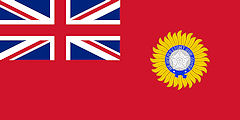
Großbritannien erklärt Nord-Baluchistan, welches es seit 1879 besetzt hält, zum britischen Territorium.
Abb.: Lage von Nord-Baluchistan
[Bildquelle: Joppen: Historical atlas of India. -- 1914. -- S. 52.]
1887-10-18
Per Dekret Gründung der Union Indochinoise (Indochinesische Union; Liên bang Đông Dương), bestehend aus Annam, Tonkin, Cochinchina und Königreich Kambodscha. Die Protektorate Annam und Tonkin werden einem Generalgouverneur und zwei Résidents généraux unterstellt, die dem Ministerium für Marine und Kolonien unterstellt sind.
Abb.: Französische Expansion in Südostasien
[Bildquelle: PHGCOM / Wikipedia. -- GNU FDLicense]
1887-11-08
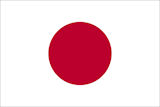
Der japanische Prinz Komatsu Akihito (小松宮彰仁親王, 1846 – 1903) besucht Siam.
Abb.: Reiterstandbild von Prinz Komatsu Akihito (小松宮彰仁親王, 1846 – 1903), Tokyo (東京), Japan
[Bildquelle: Patrickneil / Wikipedia. -- GNU FDLicense]
1887-11-08


Der Brite James Sword und der Deutsche Herman Muhlinghaus [Hermann Mühlinghaus] (aus Wiesbaden) gründen in Singapur die Straits Trading Company Ltd. zum Zinnschmelzen und Zinnexport. Gründungskapital 150.000 Singapore Dollars. Die Company bricht das Monopol der Chinesen auf Zinnschmelzen. 1912 ist die Company die größte Zinnschmelz-Firma der Welt. Die Company besteht auch noch 2015.
1887-11-30
New York: Der Kroate Nikola Tesla (Никола Тесла, 1856 - 1943) meldet ein Patent auf die Übertragung von Wechselstrom, dieses sowie weitere sechs Patente sind grundlegend für die moderne Stromübertragung sowie Wechselstromtechnik.
Abb.: Drei-Phasen-Strom
[Quelle des animated gif: Mtodorov_69 / Wikimedia. -- GNU FDLicense]
1887-12-28

Chao Phraya Bhaskarawongse (Phorn Bunnag) - เจ้าพระยาภาสกรวงศ์ (พร บุนนาค) (1849 - 1920) fährt in diplomatischer Mission nach Japan.
Abb.: Chao Phya Bhaskarawongse (Phorn Bunnag) - เจ้าพระยาภาสกรวงศ์ (พร บุนนาค), Karikatur, 1879
[Bildquelle: th.Wikipedia. -- Public domain]
ausführlich: http://www.payer.de/thailandchronik/ressourcen.htm
Phongpaichit, Pasuk <ผาสุก พงษ์ไพจิตร, 1946 - > ; Baker, Chris <1948 - >: Thailand : economy and politics. -- Selangor : Oxford Univ. Pr., 1995. -- 449 S. ; 23 cm. -- ISBN 983-56-0024-4. -- Beste Geschichte des modernen Thailand.
Ingram, James C.: Economic change in Thailand 1850 - 1870. -- Stanford : Stanford Univ. Pr., 1971. -- 352 S. ; 23 cm. -- "A new edition of Economic change in Thailand since 1850 with two new chapters on developments since 1950". -- Grundlegend.
Akira, Suehiro [末廣昭] <1951 - >: Capital accumulation in Thailand 1855 - 1985. -- Tokyo : Centre for East Asian Cultural Studies, ©1989. -- 427 S. ; 23 cm. -- ISBN 4896561058. -- Grundlegend.
Skinner, William <1925 - 2008>: Chinese society in Thailand : an analytical history. -- Ithaca, NY : Cornell Univ. Press, 1957. -- 459 S. ; 24 cm. -- Grundlegend.
Mitchell, B. R. (Brian R.): International historical statistics : Africa and Asia. -- London : Macmillan, 1982. -- 761 S. ; 28 cm. -- ISBN 0-333-3163-0
Smyth, H. Warington (Herbert Warington) <1867-1943>: Five years in Siam : from 1891 to 1896. -- London : Murray, 1898. -- 2 Bde. : Ill ; cm.
ศกดา ศิริพันธุ์ = Sakda Siripant: พระบาทสมเด็จพระจุลจอมเกล้าเจ้าอยู่หัว พระบิดาแห่งการถ่ายภาพไทย = H.M. King Chulalongkorn : the father of Thai photography. -- กรุงเทพๆ : ด่านสุทธา, 2555 = 2012. -- 354 S. : Ill. ; 30 cm. -- ISBN 978-616-305-569-9